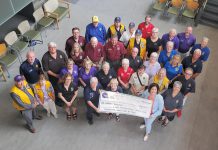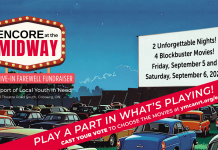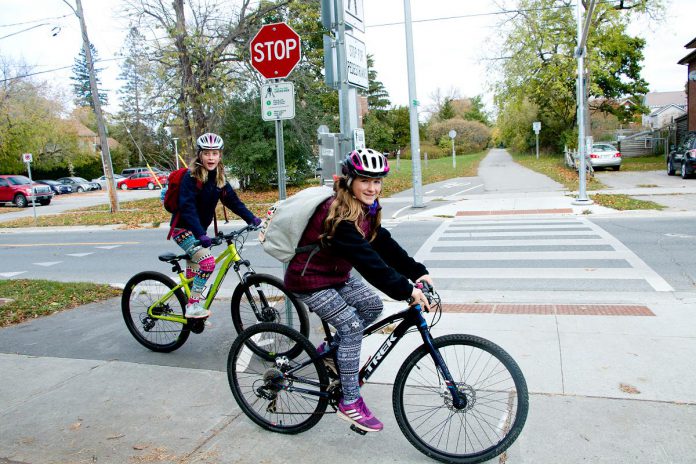
Tentatively at first, kids roll up to the starting line before making their way, cautiously, down the straight-line path and over the seemingly daunting pyramids. Soon after, however, they are rolling through the bike playground with big smiles looking for the next small challenge.
This summer has been a season of fun for kids on bikes. GreenUP, Active School Travel Peterborough, B!KE, and our partners have made it possible with lots of great programming that helps children in building confidence, skill, and comfort on two, three, and four wheels. Through these programs, kids are actively building a love of riding bikes to get around town.
It’s been such a wonderful experience that it’s gotten us asking, “Is it possible to keep the wheels rolling right into the school year?”
An average of 51 per cent of students in Peterborough live within the school’s walking zone, but Active School Travel surveys show that less than one per cent cycle to school without some type of program intervention.
As cycling educators, we dreamily look to places in Europe where hundreds of bikes fill the racks outside of schools. Most predominantly, Denmark amazes with 49 per cent of students aged 11 to 15 cycling to school. Denmark’s most bike-friendly city, Odense, is working to hit a target of 90 per cent of students walking, scooting, skateboarding, and cycling to school. Incredible!
The cycling landscape is rather different overseas, but the barriers to cycling are similar. Some common hurdles that potential cyclists face include access to equipment, education, and kid-friendly cycling infrastructure. Successful uptake of cycling in schools in Odense was thanks to the investment in programs to enhance cycling education and bikeways throughout the city.
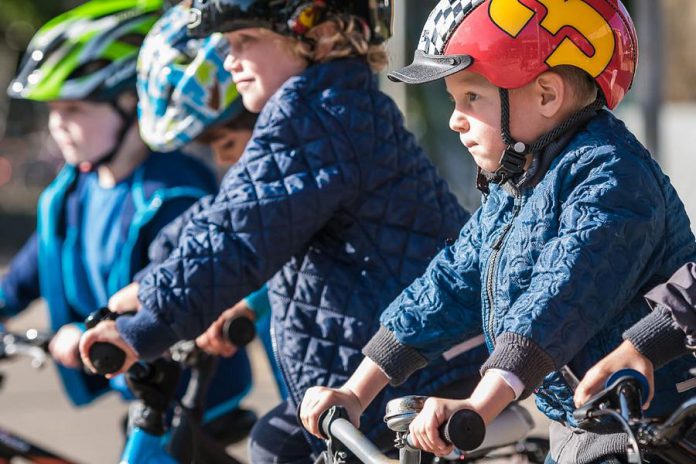
While the City of Peterborough’s new Transportation and Cycling Master Plans will move Peterborough in a good direction towards similar values to Odense’s, we also learn from some local youth who regularly choose to cycle to school about their experiences with cycling.
It’s often a scramble in the morning to get out the door. However, as many of the kids we speak to are quick to point out, rolling can often overcome some of the hurdles cyclists face, such as lack of time.
“It just feels fun,” shares James, a six-year-old cyclist. “I get to go everywhere faster than walking,”
Another 13-year-old cyclist we spoke to enjoys the speed of independent travel.
“it’s faster and easier … and you don’t need your parents to take you, you can just go!”
For many, whether with parents or not, youth spoke to riding as a part of a cycling community, and how they enjoyed the extra time with their neighbourhood friends.
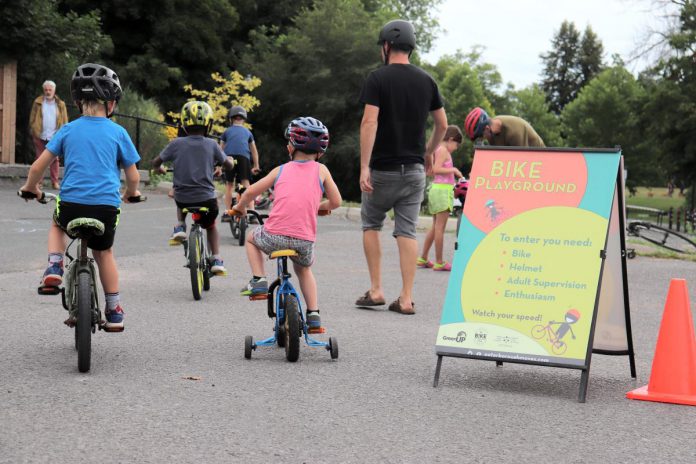
Among the perks, children remarked that riding gives them a chance to be outside in the morning before having to be inside all day.
Long-time bike-to-schooler Weylin similarly expressed that they ride because, “after a long day of school, I can ride my bike home and have the wind on my face. It’s a nice relaxing ride home to de-stress.”
From what we’ve seen this summer, soon-to-be students have a strong interest in cycling. So, how can you help more kids bike to school?
Start a neighbourhood bike train
A bike what, you ask? A bike train is a group of young cyclists riding together with some adult supervision. The train allows more children to bike to school while allowing the parents to share the task of ‘school drop-off’ amongst each other.
In areas where a bike train route is not possible, walking school buses (which operate on a similar shared-supervision model) are a nice alternative.
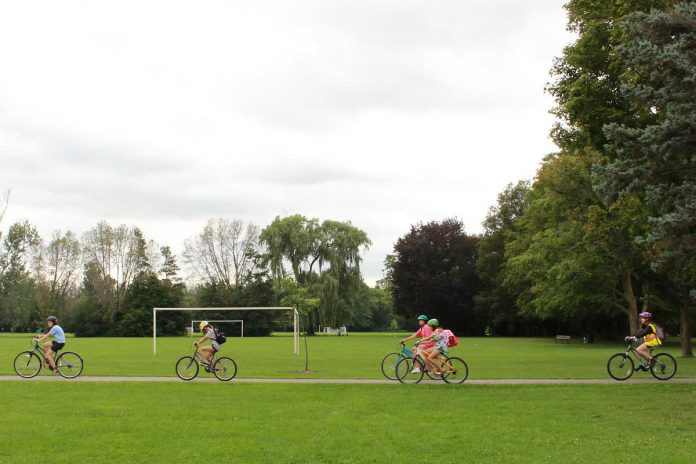
Bring a bike rodeo to school
Parents, school staff, or even students can get involved in planning for a fun event such as this. Bike rodeos build excitement for active transport while encouraging safe cycling skills.
As children move through a series of stations, they learn about helmet fit and care, basic bike maintenance, bike handling skills, and the importance of communication with other road and trail users.
Improve bike parking
Parent councils may choose to fundraise for new or better bike racks to make the arrival at school safer and easier for kids. Having a safe, secure place to lock your ride while you focus on schoolwork is a key factor for children and parents when choosing whether to roll to school.
Active School Travel Peterborough can offer guidance on parking and storage solutions for schools.
Build cycling culture
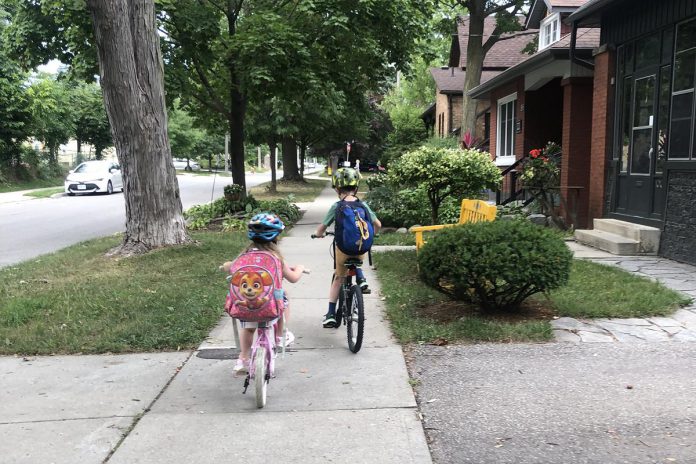
Teachers, school staff, and students can work together to build understanding and positivity about cycling to school.
Classes can connect to the provincial curriculum and hold campaigns, perform travel surveys that conduct a Roll and Stroll Check, or map travel routes around their school.
Active School Travel Peterborough programs share information on walking, scooting, riding the bus to school, and park ‘n stride/ride to five for families who need to drive occasionally.
For more information on Active School Travel Peterborough, and the programs and resources identified in this story, visit greenup.on.ca/active-school-travel.
Though the school year is starting, there are still many weeks left of summer, and many months left of perfect cycling weather. We look forward to rolling right into the school year with you!




